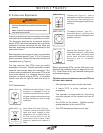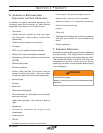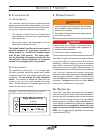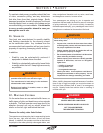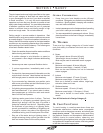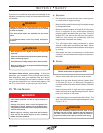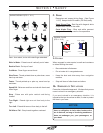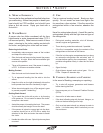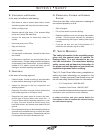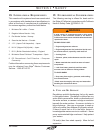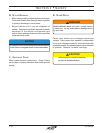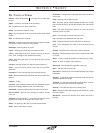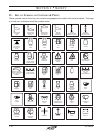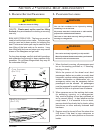
40 Outlaw
®
1.12
SeCtiOn 1 • SaFety
e. collisions anD leakinG
In the event of collisions and leaking:
• Slow down or stop to reduce water intake, unless
maintaining speed will keep the hole above water.
• Switch on bilge pump.
• Operate manual bilge pump, if the powered bilge
pump can't handle the water ow.
• Account for everyone on board and check for
injuries.
• Have everyone put on PFDs.
• Stay with the boat.
• Signal for help.
• If a leak patch is attempted, it should be done from
the outside.
• In the event of a collision, you are required to le an
accident report. Contact a state enforcement agency
or the nearest Coast Guard ofce. If you are boating
outside of U.S. waters, consult the nation you are
visiting for accident reporting requirements.
f. GrounDinG
In the event of running aground:
• Check for leaks. If water is coming in, stop the intake
of water before attempting to get the boat free.
• Inspect for damage to the hull, propulsion and
steering systems.
• Determine if the tide, wind and current will drive the
boat harder aground or will help to free it.
• Determine the water depth all around the boat,
and the type of bottom (sand, mud, rocks, etc.). If
it can be done without exposing persons to a risk
of injury, the boat should be moved away from
hard obstructions, and toward open water with soft
ground.
• Do not attempt to have your boat towed by other than
a trained and competent service, such as the Coast
Guard or a salvage company. Recreational craft are
not designed to tow other recreational craft.
G. propulsion, conTrol or sTeerinG
failure
If the drive train fails, or the controls or steering do
not respond properly or at all:
• Shut off engine.
• Put out the anchor to prevent drifting.
• Determine whether or not you can repair the problem
yourself. See the proper manuals for assistance
in troubleshooting the engine, steering and engine
controls.
• If you are not sure you can x the problem, or if
conditions are adverse, signal for help.
17. safeTY hoTlines
The safety information in the preceding pages
gives only the general areas of concern for
boating safety. It is not intended to be, nor
can it be, exhaustive. You must take a boating
safety course, and get hands-on instruction in
the proper and safe operation of your boat from
experienced persons before cruising.
The U.S. Coast Guard offers many pamphlets on
safety and other information not covered in this
manual. Contact your local Coast Guard unit or call
the toll-free safety hotlines below for information.
• U.S. Coast Guard 1-800-368-5647
• Canadian Coast Guard 1-800-267-6687
It is recommended that these and other important numbers
be stored in your cell phone for quick reference.
In other countries, ask your marine dealer for
information on how to contact the national boating
law enforcement agency.



